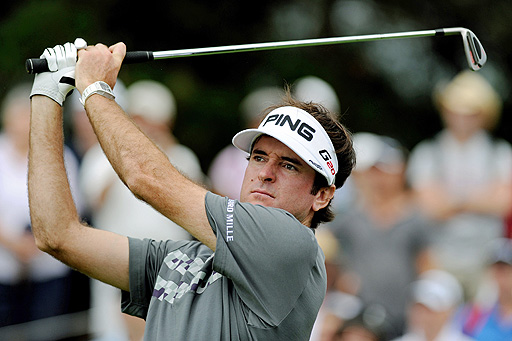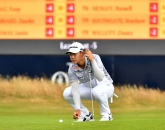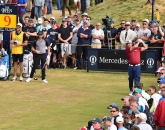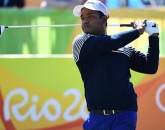At the beginning of the year it's always fun to pick out who from the world of golf is going to really make a breakthrough in the season ahead. The success stories of 2011 – Rory McIlroy and Yani Tseng – might not have surprised too many of us but what about Luke Donald? Who would have thought that one of the shorter drivers on tour would in just a few short months be riding high at the summit of the rankings of a game that is, we are constantly reminded, dominated by power? Not many, I bet.

My pick for 2012 is a man that, unlike Donald, has power by the bucketload: Bubba Watson. But while Watson's length off the tee is an undoubted advantage, it's not the only reason I expect him to make more and more headlines – and collect more and more trophies – in the months ahead.
My thinking is quite simple. After watching the Floridian at close quarters during his run of events in Australia at the end of the last year, it wasn't so much his vast hitting that impressed me – although that in itself was certainly something to watch ¬– rather it was his natural shot-making ability and imagination that stood out. While traditionalists might decry the modern game as one that relies less on creativity than it did 15 and more years ago – thanks largely to a ball that flies further and curves less – there is no getting around the fact that Watson is a shot-maker in the true and historic sense of the word.
Back when the balata ball and one-irons were de rigueur, the ability to manufacture shots with every club in your bag was a pre-requisite to greatness. Shot-makers – rather than out and out bombers – flourished in these times. Lee Trevino, Tom Watson and, of course, the late great Seve Ballesteros were such men.
Ballesteros was a genius. He could move the ball left, right, high, low, hit soft bunker shots with long irons and, if he wanted, play shots from his knees. Blessed with marvellous hands and unsullied by formal instruction, Ballesteros's imagination was unrivalled. It was written that he played the game with a "frightening intensity", with real passion, which came to the fore most obviously within the caldron of the Ryder Cup arena. Watson is not Seve Ballesteros, but the way he attacks the course is certainly Seve-esque.
What I saw firsthand in Watson's play – particularly in the breezy conditions at the Australian Open and the Presidents Cup – was the ability – and crucially, the desire – to experiment, to try to do things differently. Rather than attempt to flight his iron shots high and straight and to stop the ball as quickly as possible, Watson was creative. It was magnificently refreshing to see. Time and time again he brilliantly manoeuvred the ball through the air and along the ground, mostly to within birdie range of tucked pins. A decidedly cold putter prevented Watson from running away with the title.
At the Presidents Cup at Royal Melbourne, Watson (who won three and lost two of his matches) appeared in his element. One of the most popular spots for spectators that week was at the range to watch Watson warm up. Running through his extensive arsenal of shots before each of his matches, Watson quickly got the backing of the crowd, and he responded in kind, sharing plenty of affable banter with the galleries throughout the week. This, it should be said, was in stark contrast to last summer's French Open debacle, where he appeared to blame the French fans for missing the cut. Judging by his Melbourne showing the 2010 US PGA Championship runner-up has learnt his lesson.
Regardless, there are fewer bigger thrills in today's game than watching Watson in full flow. Like Ballesteros he is self taught but his swing, unlike that of Seve in his prime, is far from graceful. Not that that's the point. Here is a man who plays entirely by feel. He has the talent, like that other great ballstriker, John Daly, to collect a couple of majors before he calls it a day, but unlike Daly one thinks Watson is going to be around for a fair number of years before that time comes. If he can get his putter working, look for Watson to start making major waves in 2012.
Click here to see the published article.











